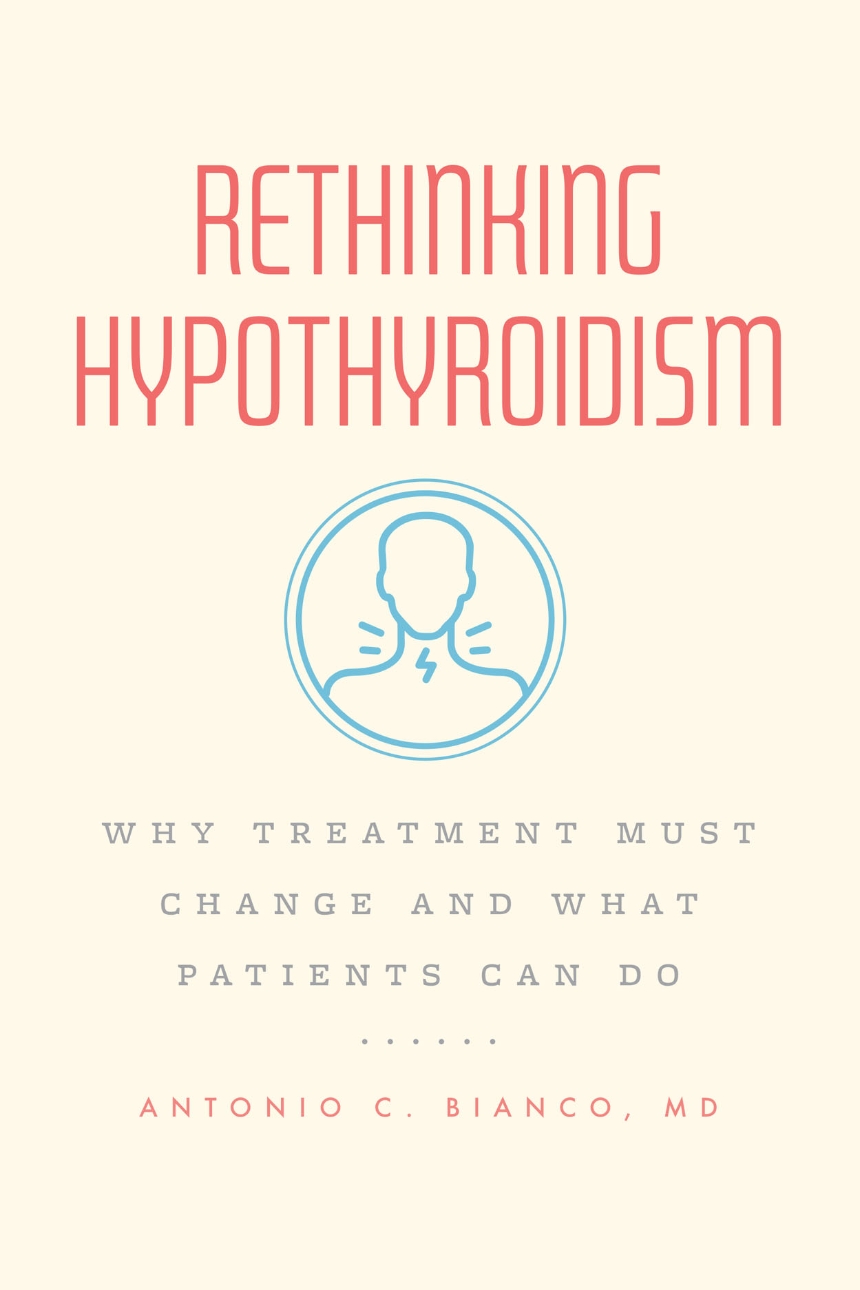Rethinking Hypothyroidism
Why Treatment Must Change and What Patients Can Do
9780226823164
9780226823140
9780226823157
9780226832999
Rethinking Hypothyroidism
Why Treatment Must Change and What Patients Can Do
In this primer for patients, their families, and their doctors, a leading physician and scientist explains why the standard treatment for hypothyroidism fails many—and offers an empowering call for change.
Hypothyroidism, also commonly referred to as Hashimoto’s disease, affects millions in the United States alone. It occurs when the thyroid—the butterfly-shaped gland that sits in your neck right above the front of your shirt collar—malfunctions or after thyroid surgery, causing thyroid hormone levels in circulation to drop below normal. Thus, treatment is aimed at bringing these hormone levels back to normal. This is done with daily tablets of thyroxine or T4. Because hypothyroidism is so common, we likely know someone who is on this type of medication. While most patients respond well to this standard treatment, about ten to twenty percent (some two to three million individuals in the United States) are far from living a typical life. They exhibit “foggy brain”—low energy, confusion, and poor memory. Many doctors have shrugged off their complaints, believing these symptoms to be unrelated to the thyroid disease. In Rethinking Hypothyroidism, Dr. Antonio C. Bianco, a physician and a scientist who has studied hypothyroidism and thyroid hormones for decades, offers an accessible overview of the disease’s treatment and the role of big pharma in shaping it, making the case that the current approach is failing many patients. But more than this, Bianco calls for alternatives to improve lives, and he equips patients and their families with the tools to advocate for other treatments.
Hypothyroidism, also commonly referred to as Hashimoto’s disease, affects millions in the United States alone. It occurs when the thyroid—the butterfly-shaped gland that sits in your neck right above the front of your shirt collar—malfunctions or after thyroid surgery, causing thyroid hormone levels in circulation to drop below normal. Thus, treatment is aimed at bringing these hormone levels back to normal. This is done with daily tablets of thyroxine or T4. Because hypothyroidism is so common, we likely know someone who is on this type of medication. While most patients respond well to this standard treatment, about ten to twenty percent (some two to three million individuals in the United States) are far from living a typical life. They exhibit “foggy brain”—low energy, confusion, and poor memory. Many doctors have shrugged off their complaints, believing these symptoms to be unrelated to the thyroid disease. In Rethinking Hypothyroidism, Dr. Antonio C. Bianco, a physician and a scientist who has studied hypothyroidism and thyroid hormones for decades, offers an accessible overview of the disease’s treatment and the role of big pharma in shaping it, making the case that the current approach is failing many patients. But more than this, Bianco calls for alternatives to improve lives, and he equips patients and their families with the tools to advocate for other treatments.
Reviews
Table of Contents
Preface
Introduction
Part One: The Crisis
1: Treatments and Controversies
2: Pharmaceutical Companies and Their Influence
3: Dogmas and Guidelines
Part Two: The Science
4: How the Thyroid Gland and Its Hormones Work
5: How T4 Transforms into T3
Part Three: The History
6: Nature’s Cures
7: Pioneering a Purer Treatment
8: Dangers of Untested Treatments
Part Four: The Patients
9: Those Left Behind
10: TSH Isn’t a Magic Bullet
11: Missing Clues and T3
12: There Is More to Hypothyroidism Than Just Low T3 Levels
Part Five: The Treatments
13: Understanding Combination Therapy
14: Embracing Options
15: The Promising Future
Epilogue
Acknowledgments
Notes
Index
Introduction
Part One: The Crisis
1: Treatments and Controversies
2: Pharmaceutical Companies and Their Influence
3: Dogmas and Guidelines
Part Two: The Science
4: How the Thyroid Gland and Its Hormones Work
5: How T4 Transforms into T3
Part Three: The History
6: Nature’s Cures
7: Pioneering a Purer Treatment
8: Dangers of Untested Treatments
Part Four: The Patients
9: Those Left Behind
10: TSH Isn’t a Magic Bullet
11: Missing Clues and T3
12: There Is More to Hypothyroidism Than Just Low T3 Levels
Part Five: The Treatments
13: Understanding Combination Therapy
14: Embracing Options
15: The Promising Future
Epilogue
Acknowledgments
Notes
Index
